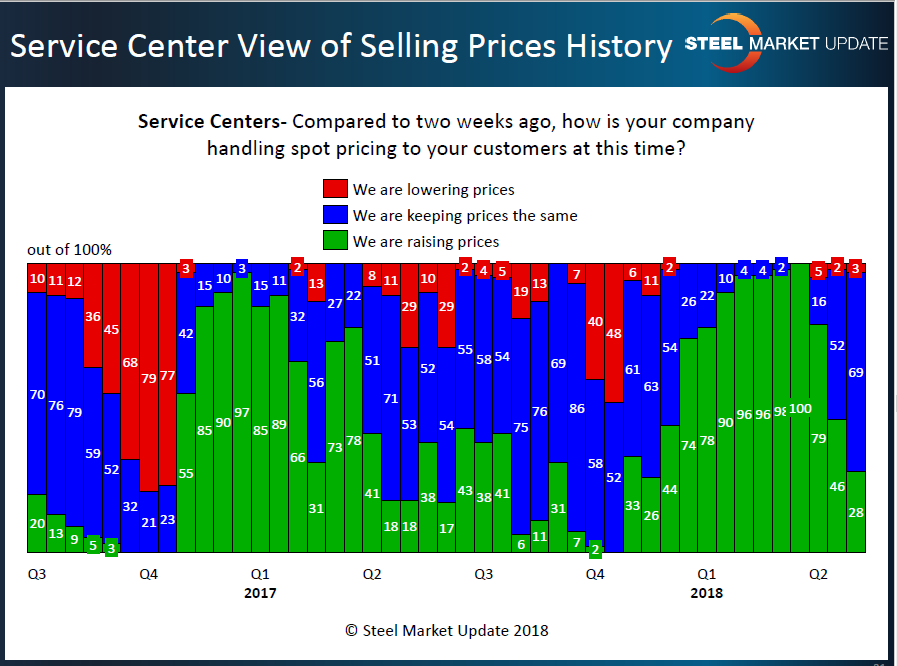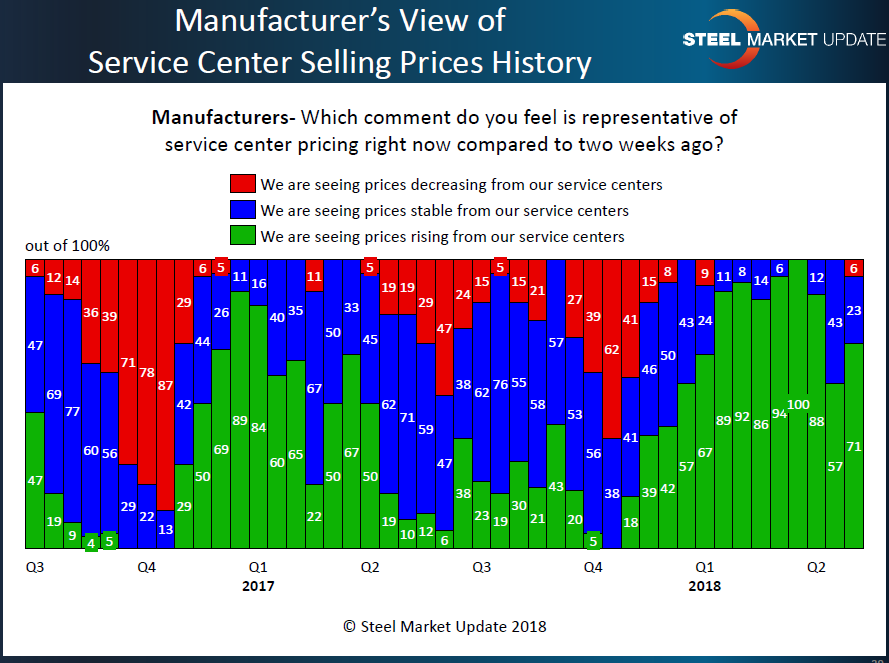SMU Data and Models

Service Center Spot Prices Showing Cracks in the Foundation?
Written by John Packard
May 8, 2018
Last week, Steel Market Update conducted our early May flat rolled steel market trends survey. One of the key areas that we focus in on is the area of service center spot pricing to their end customers. We are interested in better understanding if steel distributors are raising, lowering or keeping spot prices the same as what was being offered just two weeks back.
What we have found is service centers are no longer actively raising spot prices and have instead switched to trying to keep prices steady. Only 28 percent of the distributors responding to our questions reported their company as raising prices. This is down from the 46 percent we found in mid-April and well below the 100 percent level recorded during the middle of March 2018.
Manufacturing companies were not as pessimistic and reported service centers as still raising prices. Seventy-one percent of end-users responded that spot prices out of the service centers were higher last week than they were just two weeks before. This is a bit unusual, and SMU will need to take a harder look at this data in our next survey, which will begin next Monday, May 14.
Steel Market Update is a believer that how service centers are handling spot pricing is a reflection on the ability of the steel mills to collect higher steel prices. With the mixed results we are getting from service centers and manufacturing companies, we believe this supports our SMU Price Momentum Indicator, which is currently at Neutral. A Neutral reading means we are in a transitional market with no clear momentum for prices to move higher or lower at this time.

John Packard
Read more from John PackardLatest in SMU Data and Models

SMU’s June at a glance
A look at SMU data for the month of June.

SMU Survey: Buyers’ Sentiment rebounds from multi-year low
Both of SMU’s Steel Buyers’ Sentiment Indices edged higher this week. Current Sentiment rebounded from a near five-year low, while Future Sentiment rose to a two-month high

SMU flat-rolled market survey results now available
SMU’s latest steel buyers market survey results are now available on our website to all premium members.

SMU Survey: Sheet lead times pull back after early-June blip, plate holds
Following the uptick seen two weeks ago, lead times eased this week for all four sheet products tracked by SMU, while plate lead times held steady, according to this week’s market survey.

SMU Survey: Pricing power abruptly shifts to steel buyers
The majority of steel buyers responding to our latest market survey say domestic mills are more willing to talk price on sheet and plate products than they were earlier this month. Sheet negotiation rates rebounded across the board compared to early June, while our plate negotiation rate hit a full 100%.


